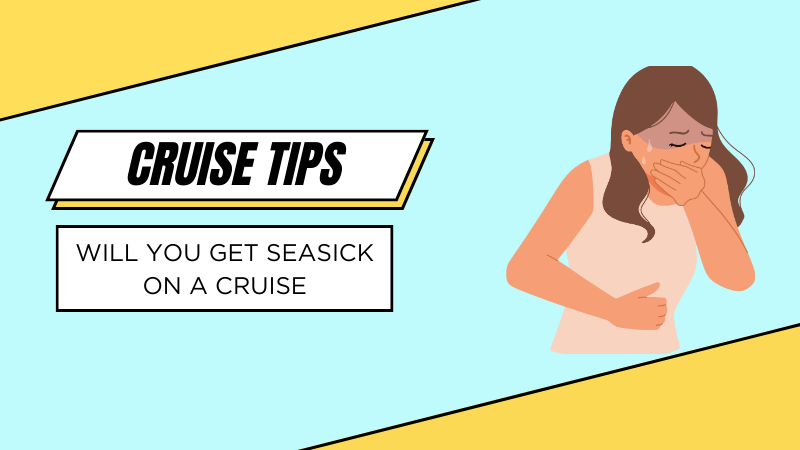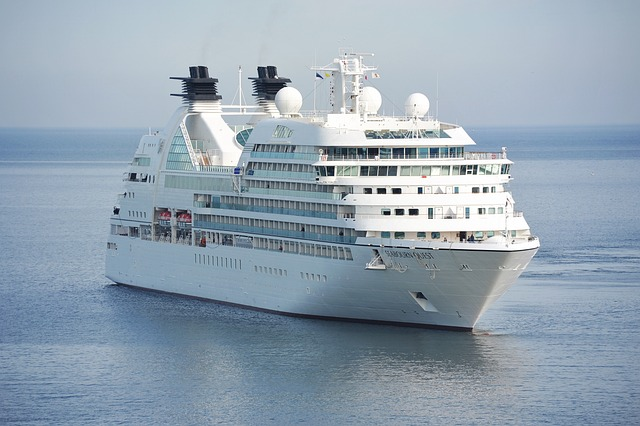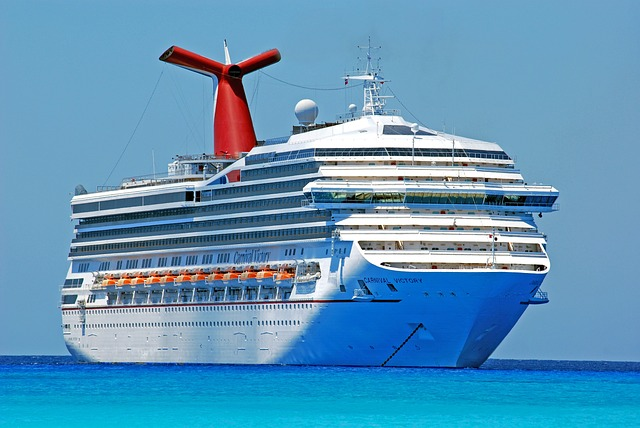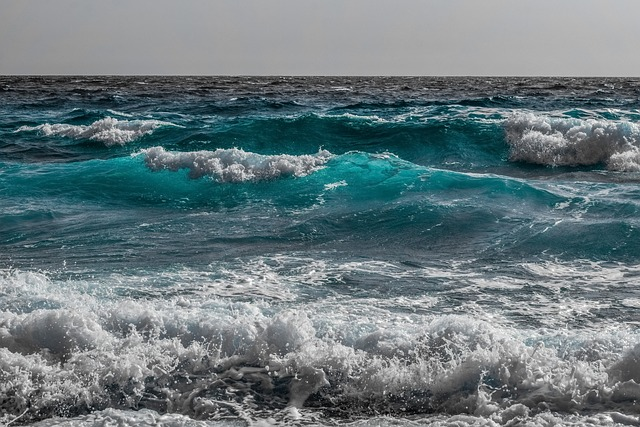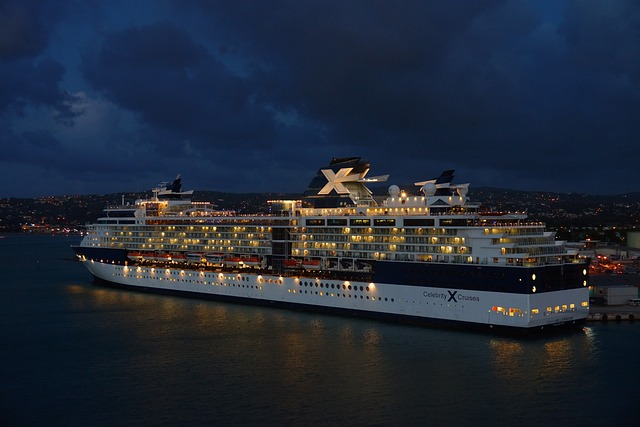Ever wondered how your stomach might fare on the mighty waves? Seasickness – a type of motion sickness that occurs in the sea – is a common concern for many about to embark on their first cruise. That queasy, green-around-the-gills feeling comes when the ship starts to sway.
As a fellow adventurer, your comfort during your voyage is paramount to us. That’s why, in this blog post, we’re going to explore how to know if you will get seasick on a cruise. Whether you’re setting sail on the vast ocean or cruising through calm waters, we’ve got your back (and your belly too)! Stick around to navigate these wavy waters. Let’s get you those sea shanks!
Understanding Seasickness: Causes and Symptoms
Are you ready to dive deep? Let’s start by discussing the causes of seasickness. Simply put, seasickness happens when your inner ear senses (that manage your balance) get disoriented by the rocking of the ship. It’s like your brain and body are on a never-ending roller coaster!
Now, imagine this: you’re in the belly of a cruise ship with no windows (bummer, right?), your eyes aren’t detecting any movement, but your inner ear screams, “Hey, we’re moving!” This mismatch of information can cause you to experience motion sickness.
Common seasickness symptoms include:
- Feeling unwell
- Nausea
- Vomiting
- Headache
- Excessive yawning
You might also feel seasick, become pale, cold, and clammy. It’s definitely not the highlight of your cruise experience, but don’t worry, we’ve got some tricks up our sleeve to keep these symptoms at bay. Buckle up, shipmate!
How Common Is It to Get Sick on a Cruise?
Truth be told, getting a bit queasy on a cruise is not as uncommon as you might think. However, thanks to contemporary cruise ships’ sheer size and stability, many passengers have smooth travel experiences without any issues.
But let’s be real here folks; not everyone gets their sea legs immediately. If you’ve experienced motion sickness before – let’s say you’ve gotten car sickness while reading in a moving car or you felt dizzy after a wild roller coaster ride – you’re more likely to feel seasick on a cruise ship.
You know what else? Young children and pregnant women are more prone to seasickness, which also tends to run in families. Does it mean you’ll spend your cruise hugging the toilet bowl? Absolutely not! You just might have to take a few extra precautions. And we’ve got just the right tips for you, so keep reading!
How to Know If You Will Get Seasick on a Cruise
Knowing whether you might get seasick on a cruise involves a good understanding of both your personal susceptibility and the environmental factors that can influence seasickness.
Assessing Your Seasickness Risk: Personal Factors
When it comes to the risk of seasickness, your personal history is a key indicator. As mentioned, if you’ve previously experienced motion sickness in a car, plane, or even on amusement park rides, there’s a possibility you might feel seasick on a cruise. People who suffer from migraines are also at a higher risk.
Ask yourself these questions to assess your personal risk:
- Do you often get motion sick in cars, trains, or planes?
- Have you experienced motion sickness on smaller boats or while partaking in water sports?
- Do you suffer from migraines or other medical conditions that could exacerbate motion sickness?
Environmental Factors That Influence Seasickness
Various environmental factors also influence your risk of seasickness. The state of the sea (calm or rough waters), the size of the cruise ship (smaller ships are more prone to movement), and the weather can all play a part.
Before embarking on your cruise, research the typical sea conditions for the time of year and the location of your cruise. Consider booking with cruise lines that operate cruise ships that are designed to minimize motion and thus reduce the likelihood of seasickness.
Pro Tip: A great way to test your sea-leg readiness is to take a day trip on a smaller boat before your cruise. It’s like a trial run to see who might get seasick without committing to a long voyage. Consider it an excuse for an extra adventure before the real fun begins!
How Long Does Seasickness Last on a Cruise?
Seasickness can feel like an unwelcome gatecrasher at your sea party, but the good news is it typically doesn’t stick around for long. Most passengers who experience seasickness find their symptoms subside within a couple of days as their bodies adjust to the motion of the ship – a phenomenon affectionately known as gaining your sea legs.
However, this can vary from person to person, and factors such as the severity of seasickness symptoms, personal health, and the conditions of the sea can influence how long seasickness lasts. Remember, your friendly ship’s doctor is always there to help you out if you continue to feel sick.
Choosing the Right Cruise to Minimize Seasickness
When it comes to choosing the right cruise to minimize seasickness, size does matter – the size of the ship, that is. Large cruise ships, like those operated by Royal Caribbean, are built with state-of-the-art stabilization systems that help reduce the movement passengers feel.
Where you sail matters too! Certain itineraries are known for calmer waters. For example, the Caribbean tends to be a good bet, especially in the summer and fall months.
Now, let’s talk cabins! To minimize the effects of motion, opt for a cabin located on a lower deck and in the middle of the ship. This area experiences the least amount of motion. Booking the right cabin could be your ticket to smooth sailing, so choose wisely!
So, if you’re worried about seasickness, go big on your ship choice and be strategic about your cabin selection. Your stomach will thank you!
How to Prevent Seasickness on a Cruise
Batten down the hatches, folks! Here are some top tips to help you prevent seasickness on your next cruise.
First off, it’s crucial to arrive on embarkation day well-rested and hydrated. Water is your new best friend, so stay hydrated, and maybe give the alcohol a rain check until you’ve got your sea shanks.
Mind over matter, right? Keeping a positive mindset can make a world of difference in combating seasickness. Believe it or not, anxiety can often make seasickness symptoms worse, so stay cool, shipmates!
Over-the-counter medications such as Dramamine and Bonine can help relieve seasickness symptoms. Remember, though, it’s always wise to check with your doctor before you start popping any pills.
If you’re more into natural remedies, acupressure bands are your go-to. They apply pressure to certain points on your wrists to help alleviate nausea.
And don’t forget good ol’ ginger! Whether in the form of ginger ale, capsules, or candies, this root has been used for centuries to treat seasickness and other forms of nausea. So, don’t let seasickness get in the way of your cruise adventure. Take charge and sail ahead!
Handling Seasickness Onboard: What to Do If You Get Sick
Okay, so you’ve done everything right, but the seasickness ghost still haunts you. Don’t worry, we’ve got you covered! Here’s what to do if you start to feel seasick onboard your cruise.
First, it’s time to hit the deck if you’re feeling queasy! Fresh air and a view of the horizon can work wonders for seasickness symptoms. Remember, the top deck is your friend. It provides the best views of the horizon and is a perfect place for some fresh air.
Feeling like you’re on a rollercoaster when you’re in your cabin? Try to move towards the middle of the ship where there is less movement.
Hydrate and eat small snacks like dry crackers. Keep taking small sips of water, clear juice, or a fizzy drink like ginger ale to help combat nausea.
Don’t be shy to contact the doctor on board, every cruise line has at least 2. The cruise ship’s doctor is well-versed in treating nausea and can provide over-the-counter medications to help manage your symptoms.
Above all, remember that this is just a temporary hitch. Keep your spirits high, and before you know it, you’ll be back to enjoying the fun and frolic of your voyage!
Conclusion
Seasickness might seem like a formidable foe, but it can be managed effectively with the right knowledge and tools. Remember, it’s all about understanding your personal susceptibility, choosing the right cruise, and adopting preventative measures to keep seasickness at bay. Even if you do experience it, know that it’s temporary and manageable with a variety of treatments, both medical and natural.
So, to all future cruisers out there, don’t let the fear of seasickness deter you from embarking on an amazing voyage. You’ve got this! Here’s to smooth sailing and unforgettable voyage adventures.
FAQs
How many people get seasick on cruises?
While there’s no exact number, studies suggest around 20% of passengers may experience some form of seasickness on cruises. However, most cruise lines, like Royal Caribbean, operate large cruise ships with advanced stabilizers, minimizing seasickness. Plus, seasickness can be effectively managed with the right preparations and techniques. Don’t let it put a damper on your sea adventure!
Is it hard to get seasick on a cruise?
Whether it’s hard to get seasick on a cruise varies from person to person. Factors like a history of motion sickness, sea conditions, and even the size of the ship can play a role. However, modern cruise ships are designed to minimize motion, and with a few precautions, many people find it quite manageable and enjoy their cruise to the fullest. So, don’t let the seasickness hold you back!
Where do you get less seasick on a cruise?
If you’re prone to motion sickness, selecting the right cabin can help minimize seasickness on a cruise. Cabins on lower decks and towards the middle of the ship experience less motion than higher or outer ones. This, coupled with modern cruise ships’ sheer size and advanced stabilization systems, can contribute to a smoother, more enjoyable sailing experience. So choose wisely and enjoy the ride!
Are you more likely to get sick on a cruise ship?
Some people may be more susceptible to motion sickness on a cruise ship due to the constant movement, many cruise passengers sail without experiencing seasickness. The likelihood can be influenced by personal factors such as a history of car sickness or migraines and environmental conditions such as rough waters. However, modern cruise ships are equipped with sophisticated stabilization systems that minimize motion, making seasickness less common.
Is it normal to feel seasick after a cruise?
Yes, it’s quite normal to feel a bit “off” or experience what’s known as “land sickness” after disembarking from a cruise. This sensation, also known as “disembarkation syndrome,” can feel like you’re still moving or rocking. It’s your body readjusting to being on the stable, non-moving ground after adapting to the gentle sway of the ship. Rest assured, it usually dissipates within a few days.
Is sea sickness worse at the front or the back of a ship?
Seasickness can be more noticeable at both the front (bow) and back (stern) of the ship, as these areas may experience more motion due to pitching (up and down movement) and propeller vibrations, respectively. For those prone to seasickness, cabins located in the middle (midship) and on lower decks are typically recommended. These spots experience less motion and can provide a smoother ride, helping to keep seasickness at bay!

